

Orangutans
at the Atlanta Zoo
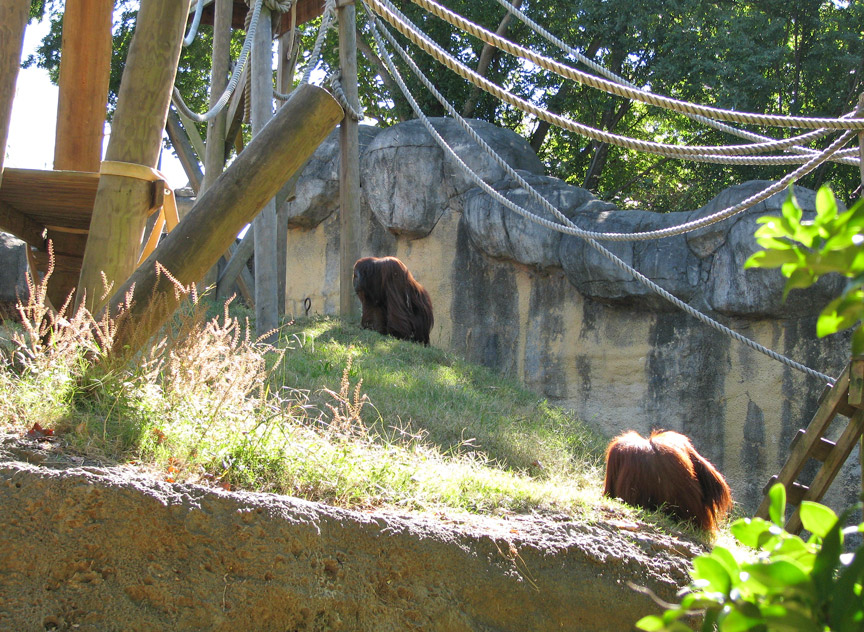
orangutan enclosure at the Atlanta Zoo
The orangutans are two species of great apes. Known for their intelligence, they live in trees and they are the largest living arboreal animal. They have longer arms than other great apes, and their hair is reddish-brown, instead of the brown or black hair typical of other great apes. Native to Indonesia and Malaysia, they are currently found only in rainforests on the islands of Borneo and Sumatra, though fossils have been found in Java, Vietnam and China. They are the only surviving species in the genus Pongo and the subfamily Ponginae (which also includes the extinct genera Gigantopithecus and Sivapithecus). Their name derives from the Malay and Indonesian phrase orang hutan, meaning "man of the forest". The orangutan is an official state animal of Sabah in Malaysia.
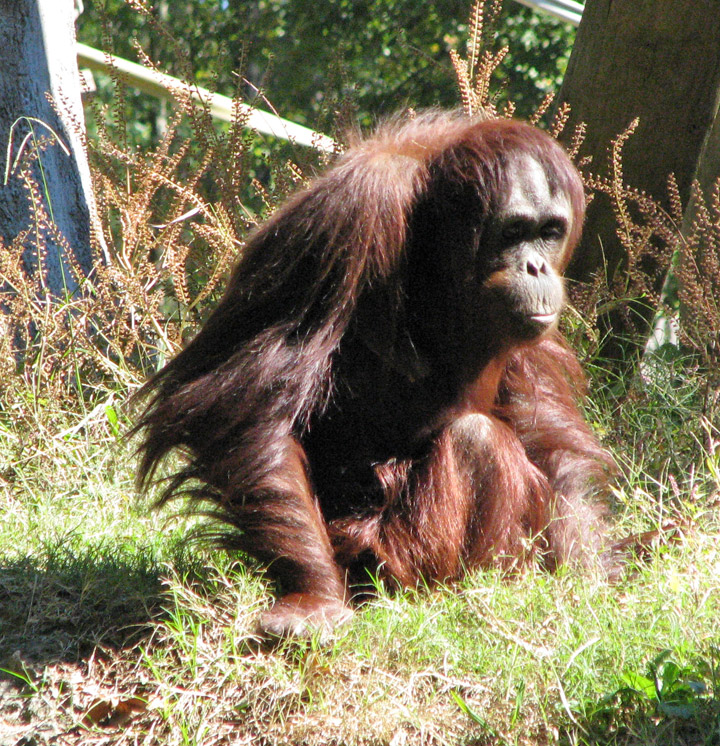
The word orangutan (also written orang-utan, orang utan and orangutang) is
derived from the Malay and Indonesian words orang meaning "person" and hutan
meaning "forest", thus "person of the forest". Orang Hutan is the common term in
these two national languages, although local peoples may also refer to them by
local languages. Maias and mawas are also used in Malay, but it is unclear if
those words refer only to orangutans, or to all apes in general.
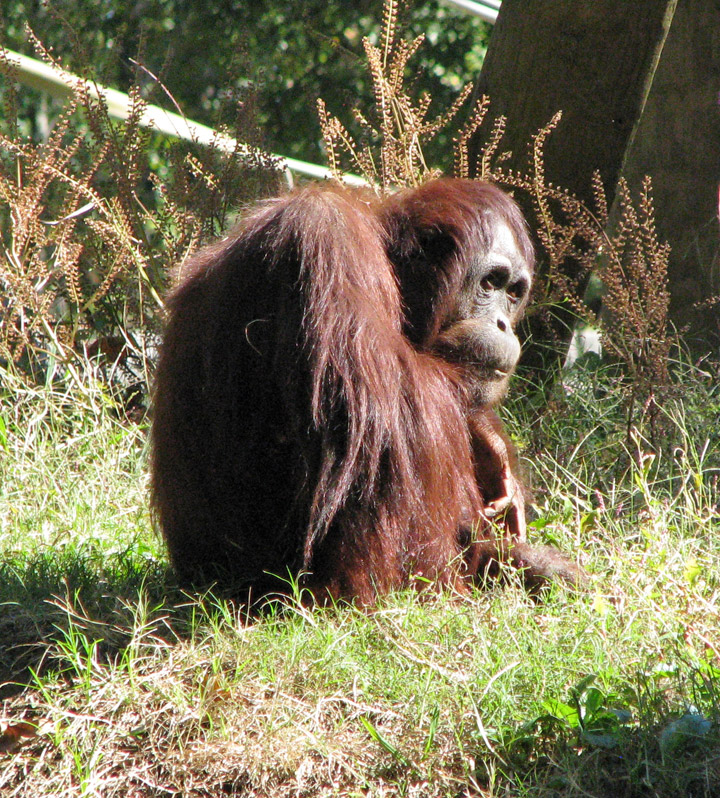
The word was first attested in English in 1691 in the form orang-outang, and
variants with -ng instead of -n as in the Malay original are found in many
languages. This spelling (and pronunciation) has remained in use in English up
to the present, but has come to be regarded as incorrect by some.

My Photos of Orangutan in Borneo
The name of the genus, Pongo, comes from a 16th century account by Andrew
Battell, an English sailor held prisoner by the Portuguese in Angola, which
describes two anthropoid "monsters" named Pongo and Engeco. It is now believed
that he was describing gorillas, but in the late 18th century it was believed
that all great apes were orangutans; hence Lacépède's use of Pongo for the
genus.
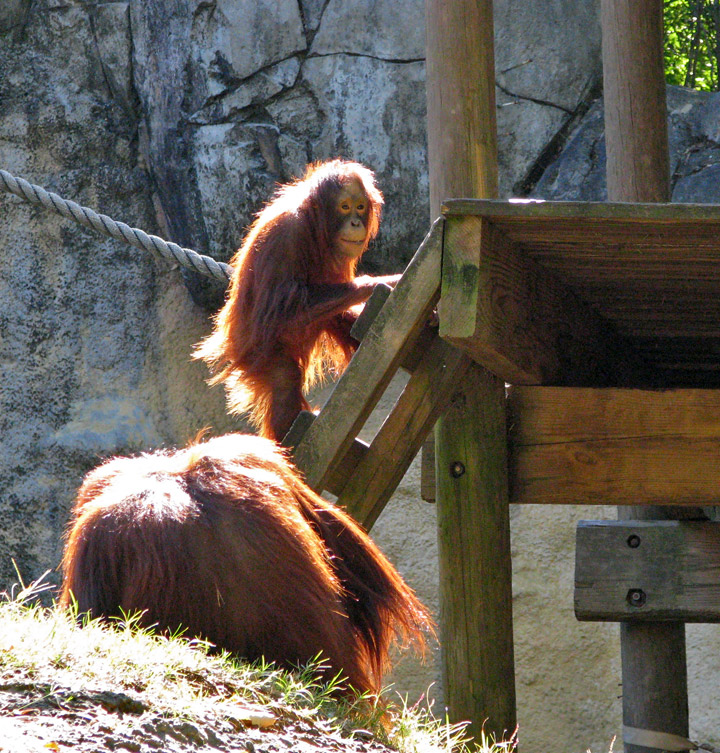
Orangutans are the most arboreal of the great apes, spending nearly all of their
time in the trees. Every night they fashion nests, in which they sleep, from
branches and foliage. They are more solitary than the other apes, with males and
females generally coming together only to mate. Mothers stay with their babies
until the offspring reach an age of six or seven years. There is significant
sexual dimorphism between females and males: females can grow to around 4 ft 2
in or 127 centimeters and weigh around 100 lbs or 45 kg, while flanged adult
males can reach 5 ft 9 in or 175 centimeters in height and weigh over 260 lbs or
118 kg.
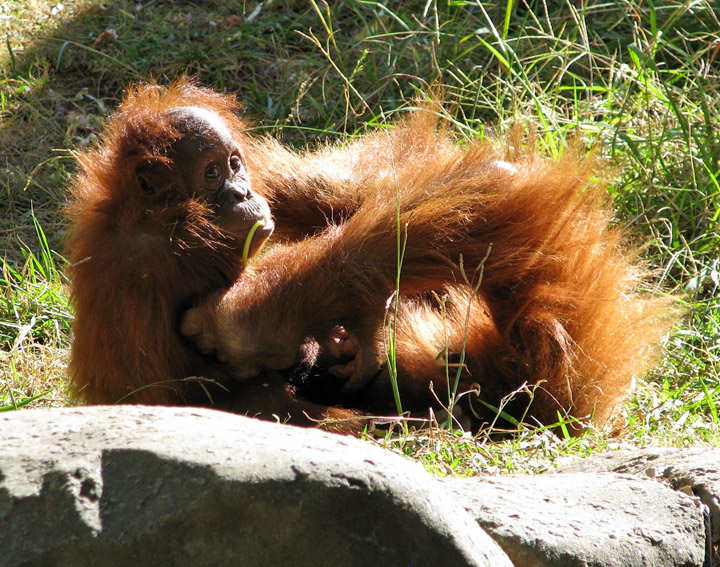
The arms of an orangutan are twice as long as their legs. Much of the arm's
length has to do with the length of the radius and the ulna rather than the
humerus. Their fingers and toes are curved, allowing them to better grip onto
branches. Orangutans have less restriction in the movements of their legs unlike
humans and other primates, due to the lack of a hip joint ligament which keeps
the femur held into the pelvis. Unlike gorillas and chimpanzees, orangutans are
not true knuckle-walkers, and walk on the ground by shuffling on their palms
with their fingers curved inwards.

Adult male orangutans exhibit two modes of physical development, flanged and
unflanged. Flanged adult males have a variety of secondary sexual
characteristics, including cheek pads (called "flanges"), throat pouch, and long
fur, that are absent from both adult females and from unflanged males. Flanged
males establish and protect territories that do not overlap with other flanged
males' territories. Adult females, juveniles, and unflanged males do not have
established territories. A flanged male's mating strategy involves establishing
and protecting a territory, advertising his presence, and waiting for receptive
females to find him. Unflanged males are also able to reproduce; their mating
strategy involving finding females in estrus and forcing copulation. Males
appear to remain in the unflanged state until they are able to establish and
defend a territory, at which point they can make the transition from unflanged
to flanged within a few months. The two reproductive strategies, referred to as
"call-and-wait" for flanged male and "sneak-and-rape" for the unflanged male,
were found to be approximately equally effective in one study group in Sumatra,
though this observation did occur during a period of instability in flanged male
rank and unflanged male mating success may be lower in Borneo.

Fruit makes up 65% of the orangutan diet. Fruits with sugary or fatty pulp are
favored. The fruit of fig trees are also commonly eaten since it is easy to both
harvest and digest. Other food items include: young leaves, shoots, seeds and
bark. Insects and bird eggs are also included.
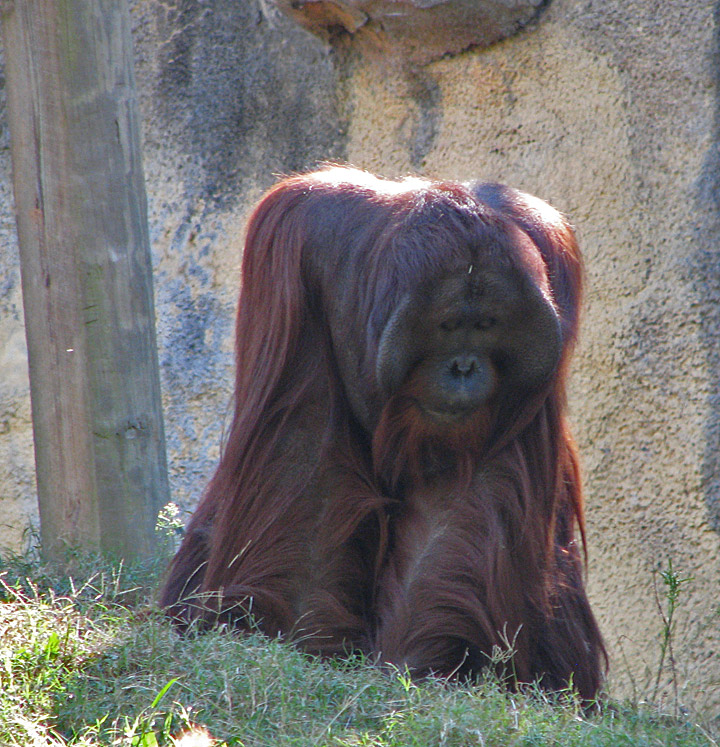
front view
Orangutans are thought to be the sole fruit disperser for some plant species including the climber species Strychnos ignatii which contains the toxic alkaloid strychnine. It does not appear to have any effect on orangutans except for excessive saliva production.
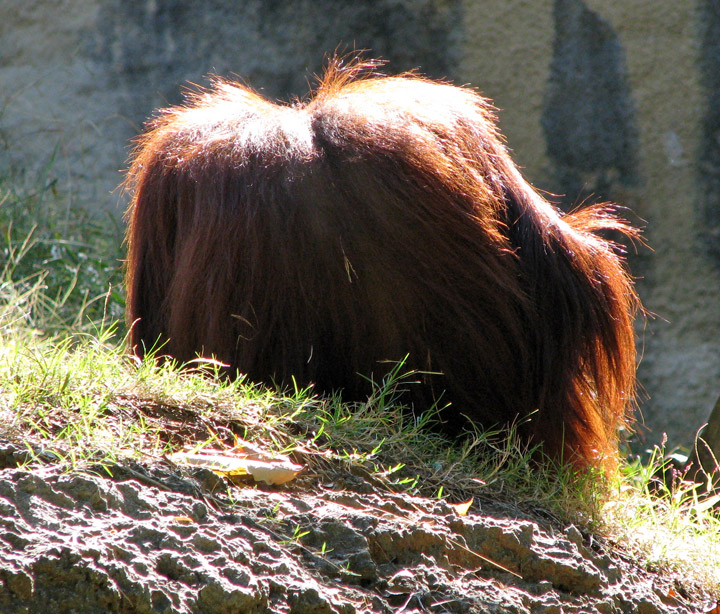
side view
Orangutans use plants of the genus Commelina as an anti-inflammatory balm.
Text from Wikipedia
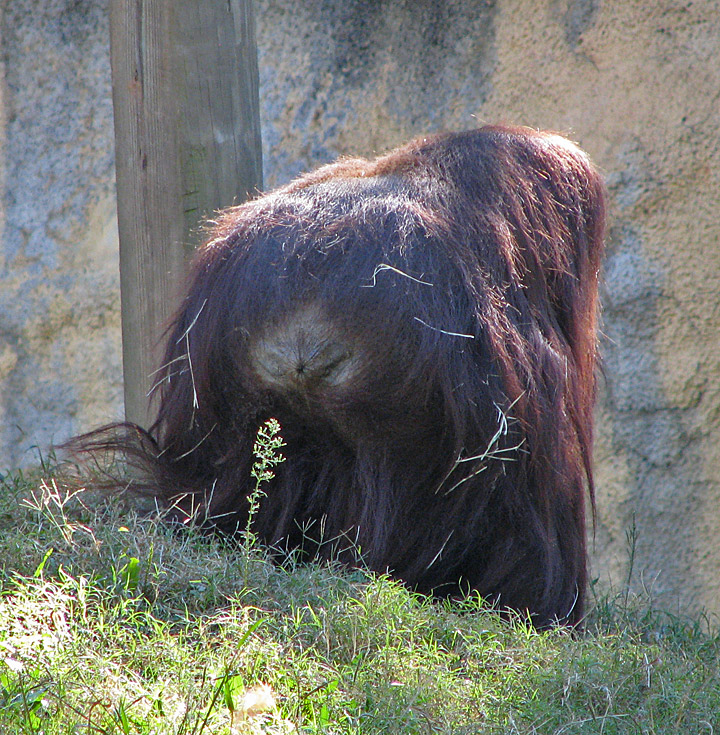
rear view
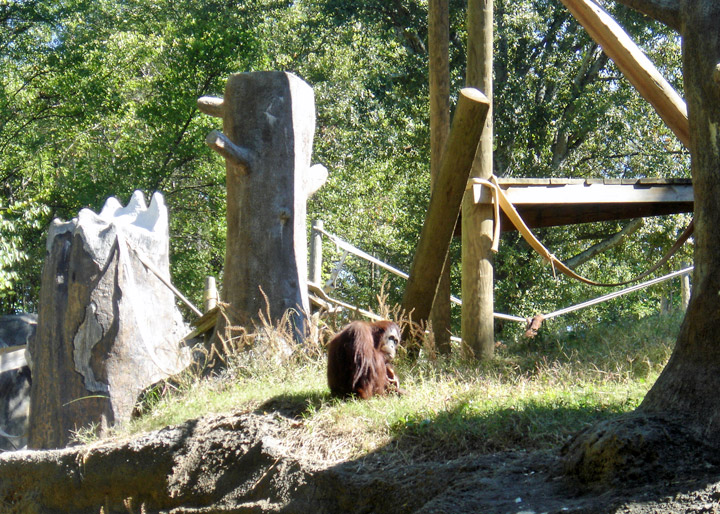
come back again